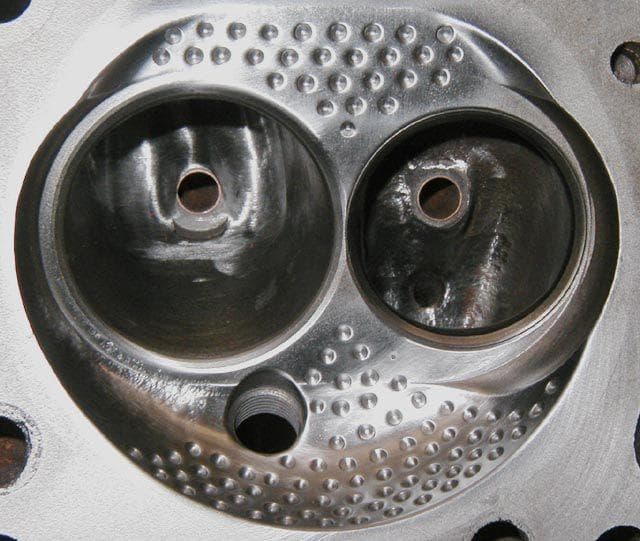I think that this is interesting.
This technique has been around a while in the gas engine racing world. Combustion chambers, pistons as well as intake and exhaust ports. There is a lot of argument of whether it works or not.
Chevy V8 combustion chamber…
Piston tops…

Valves!

It’s interesting and almost makes me say “can it be that simple?”
The dimples may be a simple solution…but coming to that solution was extremely complicated. Probably needed a high-end computer to do the calculations.
I just want to know who got messed up enough that they said hey Bubba watch this, I’m going to take my new custom racing pistons and just for the heck of it drill a bunch of dimples in them and see what happens… They were probably sitting around bench racing and playing with a golf ball and thought hummmmm… lol
I’m thinking that might be just how it happened. This reminds me of how they’re duplicating the bumps on the leading edge of whale fins on wind turbines.
The people who tried this were not Bubbas, they were engine builders that sell $100,000 race engines built to very restrictive rules searching for that tiny advantage.
I tried this myself on a set of pistons that went into my race engine. I was not allowed to touch the head but pistons were free. I used my best engineering judgement since I did not have access to CFD computer models. If it did anything, it was minimal.
Lucky mistakes happen. Anodizing aluminum was discovered by accident. The inventor was trying to electroplate on aluminum. It wasn’t working and he turned up the current. Metal plating didn’t occur but a tight oxide formed on the base aluminum piece. This made highly reactive aluminum much more inert. Eureka!
The answer my friend is blowing in the wind…
I guess my point is they didn’t need computers to do this. And I imagine someone making the connection to how golf balls work had something to do with it.
The diesel design, on the other hand, probably did have computers involved.
